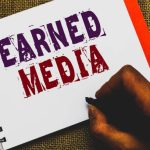Earned Media Value (EMV) is a crucial metric in public relations (PR) that helps gauge the success of PR campaigns by quantifying the value of media coverage a brand receives. It provides an estimation of what the equivalent advertising spend would be for the same amount of exposure. Several factors influence Earned Media Value in PR campaigns, and understanding these elements is key to maximizing the effectiveness of PR efforts.
Media Reach and Audience Size
The reach and size of the audience are significant determinants of Earned Media Value. Media reach refers to the total number of people who are exposed to the media content. A larger audience size usually translates to higher Earned Media Value because the potential impact of the message is greater.
Key Considerations for Media Reach:
- Media Outlet Popularity: Coverage in highly popular and widely read or viewed media outlets tends to have a higher EMV due to their vast audience base.
- Target Audience Alignment: Ensuring that the media outlet’s audience aligns with the target demographic of the PR campaign can enhance the relevance and impact of the media coverage.
- Geographical Reach: National and international media coverage generally holds more value than local media, unless the campaign is specifically targeting a local audience.
Quality and Credibility of the Media Outlet
The credibility and reputation of the media outlet play a significant role in influencing Earned Media Value. Coverage from a reputable and well-respected outlet is often perceived as more valuable because it can significantly enhance the credibility of the brand.
Factors Influencing Media Outlet Quality:
- Journalistic Standards: Outlets known for their high journalistic standards and ethical reporting are likely to have a more significant impact on EMV.
- Specialization and Expertise: Media outlets that specialize in specific industries or topics may provide more valuable coverage if the PR campaign is related to their area of expertise.
- Historical Performance: Past performance and the perceived influence of the media outlet can also affect EMV. Outlets with a history of producing influential and widely shared content tend to contribute more to EMV.
Nature and Tone of the Coverage
The nature and tone of the media coverage are crucial in determining Earned Media Value. Positive coverage that portrays the brand in a favorable light tends to have a higher EMV compared to neutral or negative coverage.
Elements of Coverage Quality:
- Message Alignment: Coverage that accurately conveys the key messages of the PR campaign and aligns with the brand’s goals is more valuable.
- Depth and Detail: In-depth articles or segments that provide detailed information about the brand or campaign contribute more to EMV than brief mentions.
- Positive Sentiment: Favorable coverage that highlights the brand’s strengths, achievements, or positive attributes tends to enhance EMV significantly.
Social Media Amplification
The amplification of media coverage through social media can substantially boost Earned Media Value. When media stories are shared, liked, commented on, or retweeted by social media users, it increases the reach and impact of the coverage.
Strategies for Maximizing Social Media Amplification:
- Engaging Content: Creating content that is engaging and shareable can encourage social media users to spread the message further.
- Influencer Collaboration: Partnering with influencers who have a large and engaged following can help amplify the reach of the media coverage.
- Interactive Campaigns: Running interactive campaigns, such as contests or polls, that encourage user participation and sharing can enhance the visibility and impact of the media coverage.
Measurement and Analysis Techniques
Effective measurement and analysis techniques are essential for accurately assessing Earned Media Value. Utilizing advanced analytics tools and methodologies can provide a more precise estimation of EMV and help identify areas for improvement.
Key Measurement Techniques:
- Media Monitoring Tools: Utilizing media monitoring tools to track coverage across various platforms and measure reach, engagement, and sentiment.
- Analytics Platforms: Employing analytics platforms that offer comprehensive insights into media performance and audience interaction.
- Benchmarking: Comparing the EMV of current campaigns with past campaigns or industry benchmarks to gauge performance and identify trends.
The Role of Impact Authority PR Agency
The expertise and strategies employed by a PR agency can significantly influence Earned Media Value. Agencies like play a crucial role in planning and executing PR campaigns that maximize media coverage and EMV.
Contributions of Impact Authority PR Agency:
- Strategic Planning: Developing comprehensive PR strategies that align with the brand’s goals and target audience to ensure impactful media coverage.
- Media Relationships: Leveraging established relationships with key media outlets to secure high-quality coverage.
- Content Creation: Crafting compelling press releases, articles, and other media materials that resonate with journalists and editors.
Conclusion
Understanding the factors that influence Earned Media Value is essential for the success of PR campaigns. By focusing on media reach, the credibility of media outlets, the nature of the coverage, social media amplification, and effective measurement techniques, brands can maximize their Earned Media Value. Partnering with experienced PR agencies like Impact Authority PR Agency can further enhance the impact and effectiveness of PR campaigns, ensuring that the brand receives the recognition and value it deserves.














